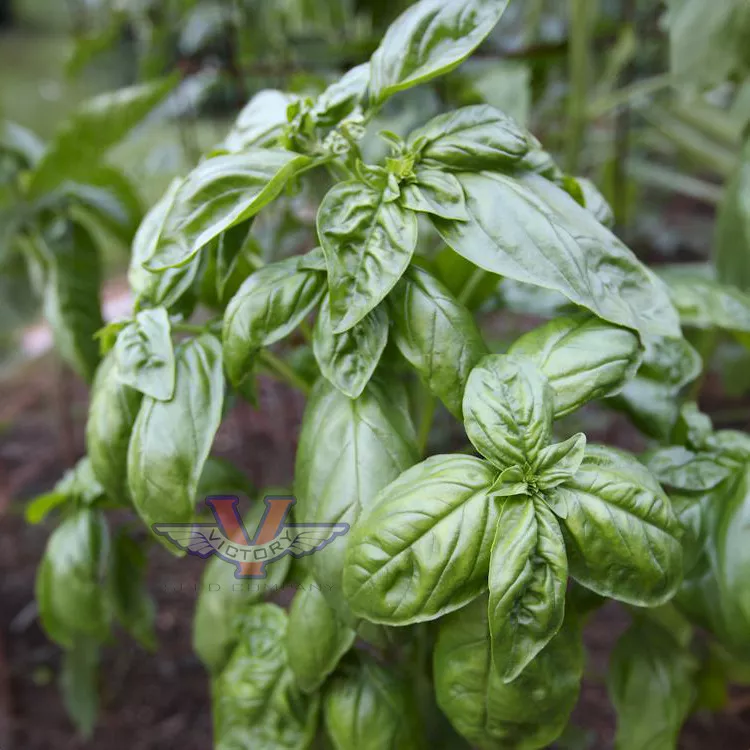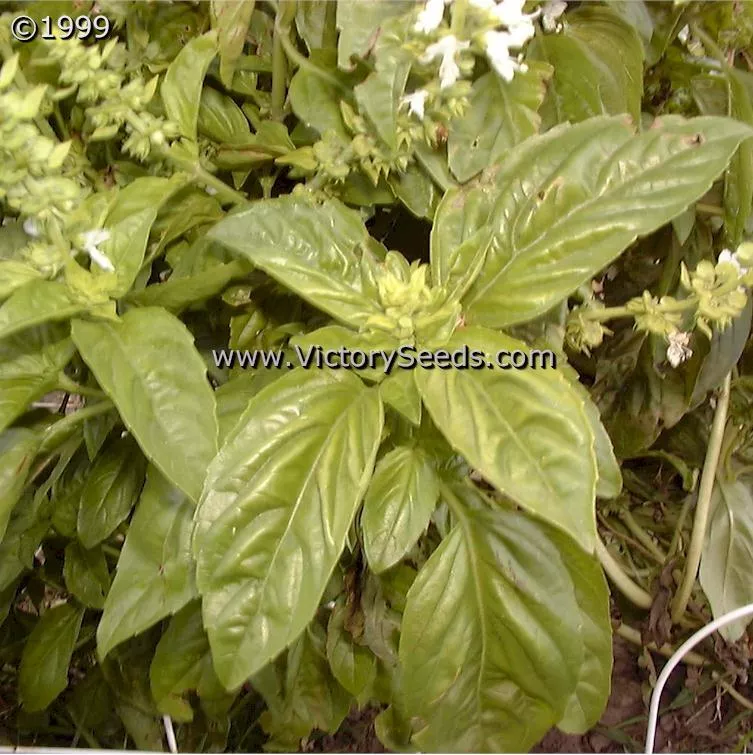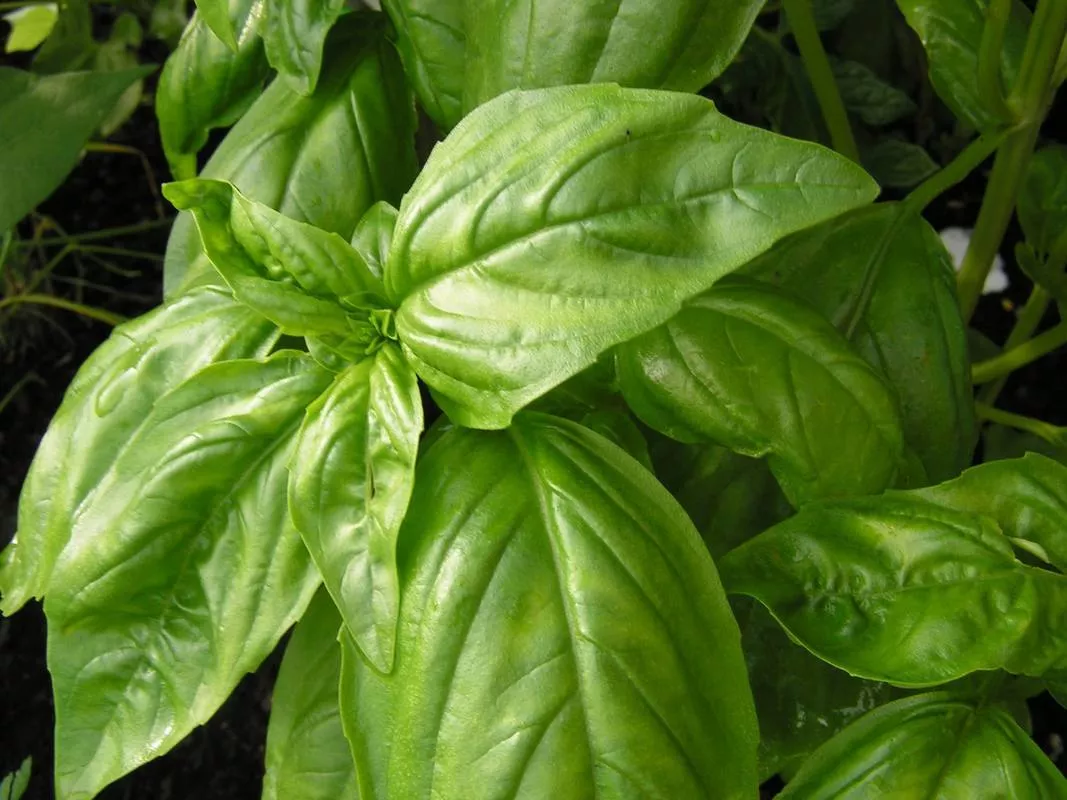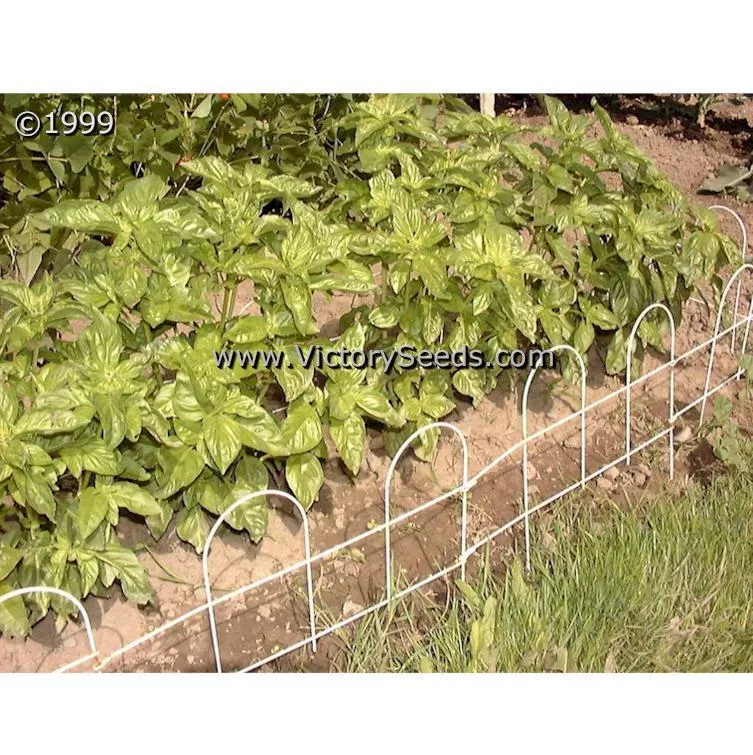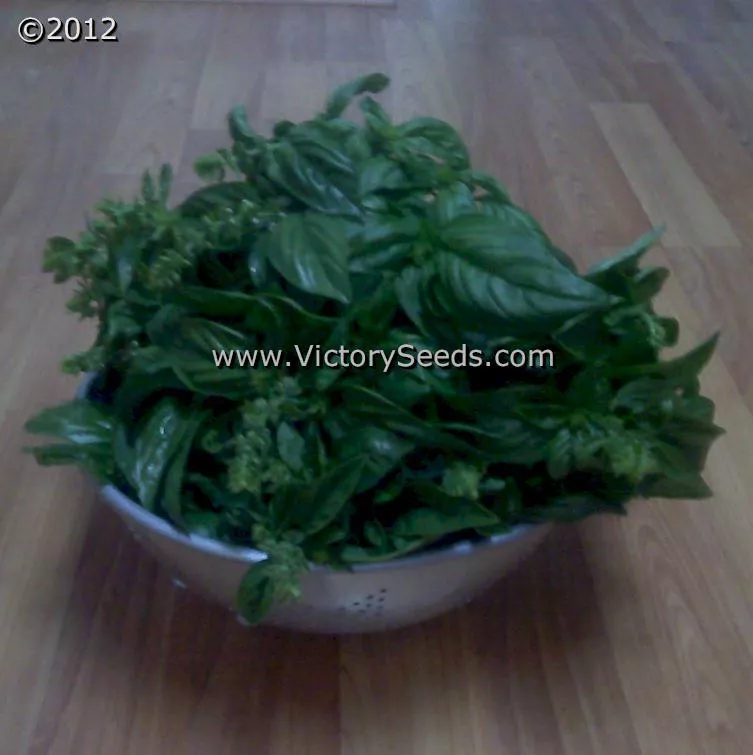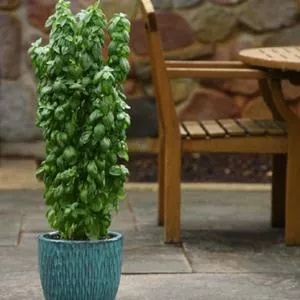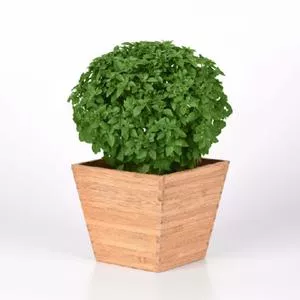




Basil, Italian Large Leaf (Sweet)
Price: $3.09
SKU: 4000601Prefers well-drained soil, even moisture, and full sun. The plants grow to about eighteen inches, and provide several harvests. An annual.
Planting Instructions:
Germination: 5 to 7 days
Planting Depth: 1/8 inch
Seed Spacing: 1 to 2 inches
Thinning Height: 2 inches
Spacing after Thinning: 8 inches
Days to Maturity: 75 to 85 days
A native to Europe and cultivated for centuries as a fresh and dried culinary herb. Common in America by the late 1700s.
Sow seeds indoors or directly into the garden after all danger of frost has passed. The plants should be spaced in rows eighteen inches apart or used in group plantings.
The plants grow to about eighteen inches, and provide several harvests.
The leaves are used fresh to make pesto, and can be dried and used as a seasoning. A favorite in Italian dishes.
Prefers well-drained soil, even moisture, and full sun.
First thing in the morning, when the essential oils of the plants are most concentrated, harvest mature leaves. A dual purpose practice is to regularly pinch back the growing tips of your plants. These trimmings can be used in the kitchen and the pruning of the growing tips stimulates branching which will result in sturdy, bushier plants. Whatever your harvesting practice, do not reduce your plant's foliage by more than one-third and allow it to recover before harvesting from the same plant again. After harvesting and since basil is a leafy green plant, encourage growth by feeding a good, balanced fertilizer.
The essential oils (the components that provide the flavors and fragrance) are as noted previously, quite fragile. That is, they are easily lost. Harvesting at their peak in the morning is the first step but how you store it is also critical.
For long-term storage, basil leaves can be dried and used as seasoning. In fact, many recipes call for dried basil rather than fresh, as the flavor is more subtle and complimentary. However, the best way to store basil past the fresh use stage, while preserving full-flavor, is to do what Denise does. She takes the leaves and either chops them or runs them through the food processor. As quickly as possible, they are then placed into ice cube trays and frozen. Once solid, she removes them and either stores them in freezer bags or for longer term, in vacuum sealed bags. Then throughout the year we can thaw and enjoy "fresh" basil in dishes, drop a cube into sauce or soups, or make into pesto.
During the growing season, you can take your clippings, wrap the cut ends in a damp paper towel and store in a plastic bag in the refrigerator. They will last a week or two using this method but we generally either just go out and harvest what we need, fresh, or if it is a period where we have an abundance, process for long-term storage as described.
Customer Reviews:
By Karen (Falls Church, VA) on July 30, 2025
Basil has so many uses. Victory's seeds make it easy to do whatever you want since the seeds all seem to germinate! I have already made 15 jars of pesto and will be making more. Additionally, I have used the basil for various dishes including Spaghetti alla Nerano (the zucchini pasta dish made famous by Stanley Tucci). Yes-the zucchini were grown from Victory Seeds as well. The basil is a great producer full of flavor. Highly recommend.
By James Brine (Westminster, Md) on June 26, 2025
My basil did produce the large leaves and was very fragrant. It is still producing even in our 100 degrees weather (under row cover).
By Ryan (New Orleans, Louisiana) on August 25, 2024
30 of these basil babes went wild after I seeded them in egg cartons and planted in 12 inch pots with plenty of sun on the south side of the house. I gave them a little organic vegetable and tomato plant food every 6 weeks. They grew into a 3-4 foot tall basil bush forest with fat succulent green leaves bursting out all over the space. They are terribly sexy to look at but fortunately the fence prevents neighbors from seeing them and losing their minds. You can't find basil like this in a grocery store. Perfect Italian style basil for everything, including pesto, pasta, soup, salads, etc. I grab my heaping daily handful and the healing spirit of basil infuses my food and my life. There were some caterpillar attacks early in the season, but the basil babes don't want no scrubs and bounced right back. We also had very heavy rains here in late June and July, which infected some of the plants with black leaf. But as the season dried out they recovered and are exuberantly healthy again. So they appear to be extremely resilient. I highly recommend growing basil as it is easy and productive, offering up a daily harvest from June all the way till Christmas here in New Orleans (zone 9b). And this varietal is a great choice and likely to produce centerfold worthy babes for you. Just be wary of the neighbors.
By Crissa Becker on March 2, 2019
These plants germinate great (in warm weather) and grow amazingly. They taste great, and the green flower stalks look nice too. The plants wilt when it gets up to 100F degrees here in Texas, but what doesn't? I recommend this basil variety. It is the best for eating. If you take cuttings they root well.
By Marshall Gibson on February 25, 2018
I can't remember the recommended procedure for planting these, but I will tell you how I did it. Sprinkle a bunch of seeds all over the ground, kinda mix em in, and water. In a few weeks you will have way too much basil.
I planted a 16x16 area with a ton of seed, and ended up with a very dense patch of basil I proceeded to harvest a third of the leaves about once a week until I spotted signs of blooming (little green flower starting on top, kind of looks like a hop flower) and then I cut the whole plant.
This basil makes great pesto. My wife and I made about a gallon of pesto all said and done. Ate it until we couldn't stand it and froze the rest. We still have quite a bit as a little bit goes a long way. It is also delicious served with sliced tomatoes and mozzarella as a caprice salad. Easy and delicious and it smells so good in your garden. Tons of food in a small area. What's not to love?
By Trevor Carrington on June 27, 2017
This basil has been wonderful. I started it inside while the weather was cool and once the soil warmed up, I transplanted my plants outside. By mid-June the plants were growing rapidly and have been a great addition to the garden. It was easy to grow and has been very easy to care for. It gives off a great scent and even better taste.
By Joe DeMeo on August 16, 2014
I never knew Basil was so easy to grow. The seed packet had so many seeds and I'm sure every single one germinated and have grown into huge beautiful Basil plants. Outstanding performance.
By Valerie Whitman on July 31, 2012
As long as you care for them, they grow throughout the summer and produce flavorful, green leaves. It does make good pesto basil.
By Anne Thiel on June 3, 2011
Excellent for making Pesto. Continued to grow throughout the summer when leaves were regularily picked. Will plant every year!
By tiffany patterson on May 24, 2011
This is a great tasting basil, you will not be disappointed.
